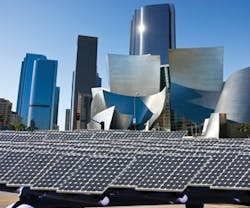Energy Star Names Top Cities
Los Angeles, Washington D.C., Atlanta, Chicago, and San Francisco topped the EPA’s honor roll of the U.S. metropolitan areas with the most ENERGY STAR-certified buildings in 2011.
The nearly 16,500 ENERGY STAR-certified buildings across America have helped save close to $2.3 billion in annual utility bills and prevented greenhouse gas emissions equal to emissions from more than 1.5 million homes.
“More and more organizations are discovering the value of ENERGY STAR as they work to cut costs and reduce their energy use,” says EPA Administrator Lisa P. Jackson. “This year marked the 20th anniversary of the ENERGY STAR program, and today ENERGY STAR-certified buildings are helping to strengthen local economies and protect the planet for decades to come.”
Costing more than $100 billion per year, energy use in commercial buildings represents nearly 20% of U.S. greenhouse gas emissions. Commercial buildings that earn ENERGY STAR must perform in the top 25% of similar buildings nationwide and be independently verified by a licensed professional engineer or a registered architect.
ENERGY STAR-certified buildings use an average of 35% less energy and are responsible for 35% less carbon dioxide emissions than typical buildings. Fifteen types of commercial buildings can earn the ENERGY STAR rating, including office buildings, K-12 schools, and retail stores.
